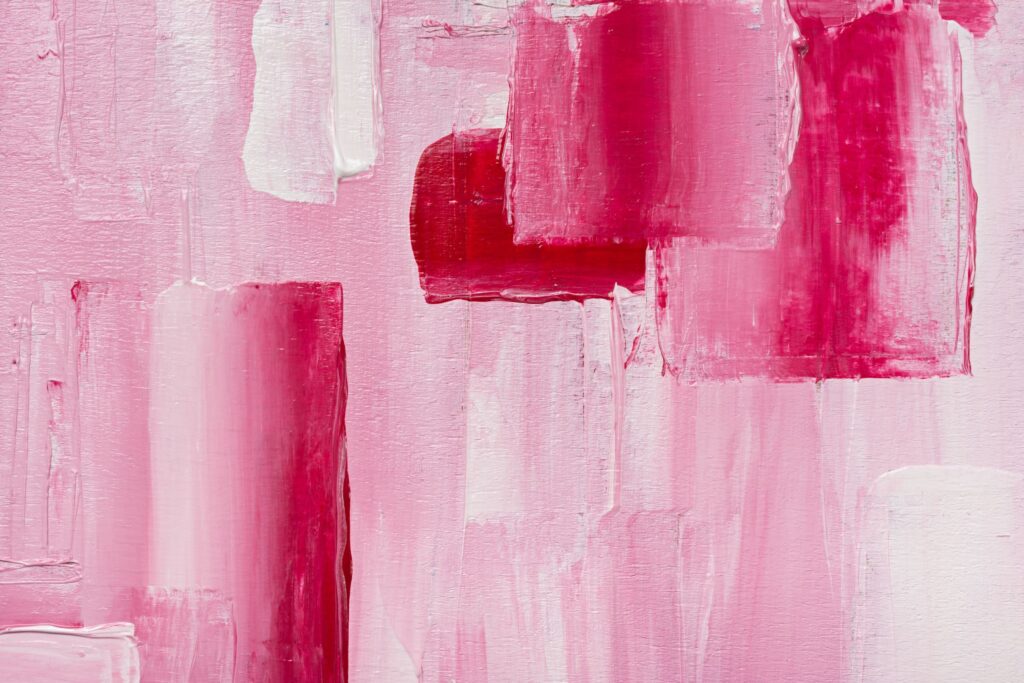
(Shutterstock)
Growing up, I shunned anything shaped like a heart, anything ruffled or bedazzled, anything pink. In the first two instances, my antipathy holds—unless the heart holds Godiva chocolates. But my own heart does a secret leap, like a kid embarrassed to love ballet and practicing in an empty room, whenever I find myself in the presence of pink.
Does anything catch and soften the light better than pink silk? Could anything line a seashell more exquisitely than pink mother of pearl? Pink light turns back the clock, letting even dowagers flirt. The pink of health has a Caucasian bias, but maybe it needs one, because nothing looks more sickly than the grayish pallor when a White person loses rosy cheeks.
Of course, there are also dreaded pink slips. Lethal pink triangles. Pink nylon uniforms for historically female, underpaid jobs. Pink nurseries that waste no time informing girl babies that they must be sweet and docile and soft and girly.
I never wanted to be girly. The Barbie aisle made my eyes hurt. When I hit my teens, I refused to read a Barbara Cartland romance or wear lingerie in that ubiquitous dull beige-pink or buy cosmetics from anybody who drove a pink Cadillac.
Now, though, reading Michel Pastoureau’s latest tour de force, Pink: The History of a Color, I sink into its glories, whether in a winter sunset or an ancient fresco, the marble of the Grand Trianon or the flesh in a Rubens painting, the Susan B. Komen T-shirt or the Pink Panther, and I realize I have yanked off one of color’s most intriguing cultural threads. High style, sometimes campy, often ambiguous but nearly always sensuous, luxurious, delightful. Until Barbie.
Color geeks have squabbled for centuries over whether pink is even a color, as it is merely a paled version of red. There is no pink stripe on a rainbow, no pink on a color wheel, no pink in historic flags and heraldry. This shade was elusive from the start, fragile and ephemeral. We find it now in the earliest cave paintings and the ruins of Pompeii, but not because anyone chose to use it. Artisans in Pompeii liked high shine: glossy and iridescent reds and browns. Time gave us pink, fading and muting red, brown, or orange.
The first color names for pink came straight from flowers: roses, fuchsias, carnations, pinks…. The first pink paints came from the stuff of the earth: chalk, ground limestone, kaolin, ceruse, or plaster for the whites, mixed with red ocher, hematite, madder, kermes, iron oxide, cinnabar…. Beginning in the Middle Ages, though, the most prized source of pink was brazilwood. Here is a recipe from 1480 Tuscany: “Take a good portion of brazilwood and immerse it in a certain quantity of water to which a bit of chalk has been added; add as much tartar as needed, and if you can, the urine of an ass, but moderately. If you do not have ass urine, that of a drunk man will do.”
This was not satire; Europe’s artists craved pink in the Renaissance, when color recipes were often imprecise and idiosyncratic. The pink that oozed from brazilwood was already a precarious color, the pigment unstable, difficult to fix and unpredictable to dye. As a result, pink began to be associated with aspects of life that were precious but changeable and often fleeting: love, beauty, luck, and fortune.
Is that why it became the color of femininity, because women were thought to be unpredictable, changeable, irrational? I like the theory until I remember that upper-class families dressed little boys in pink until World War I. Since the mid-eighteenth century, pink had been the color of luxury, Pastoureau writes, because the elite sought pastels “to distinguish themselves from the middle classes, which now had access to bright, strong, and reliable colors that had once been prohibitively expensive.”
So pink is about art, class, money, sex (Toulouse-Lautrec squeezed plenty of pink onto his palette when he painted women of the evening, and the unofficial courtesans of the demimonde robed themselves in pink). Most recently, pink is about gender. I rebelled, only tolerating pink on men. I loved the priest’s pink vestments in Advent; the preppie pink button-down oxfords dared by the coolest guys in college. But girls—and later, women—who did up their rooms in pink frills? Ugh. And why was Barbie not only pink but perhaps the world’s only ugly pink?
Maybe—this is my kindest theory—the marketers were inspired by Elsa Schiaparelli, who made an intense, saturated fuchsia pink her signature color and called it, with a wink, “shocking pink.”
Or maybe the color had to soak itself lurid to get kids’ increasingly rare attention, because our visual society is so saturated, so crammed with stimulus, that pastels are simply not loud enough.
Or maybe Barbie pink seemed grown-up. “For many years, the pink on toys for little girls—or marketed as such—have tended to become harsher, purpler, and more saturated,” Pastoureau writes, “thereby losing all suggestion of childhood.” These intense pinks are sexy, not pale and modest like the awkward Prom dress in Pretty in Pink. (Mollie Ringwald cried when she saw it.) Another theory, then: the earlier sexualization of children, the insistence that they grow up fast.
I sigh. Why are little girls always being tugged this way or that? Why is femininity always overwrought, either overdone, hyped into ridiculousness, or deemed passive and scorned? If we could simply let pink be, enjoy its moods and ambiguity, then I could have bought myself a pink silk dress years ago, and painted our bedroom walls champagne pink, and oh, how I would love a pale pink Mini Cooper with a black roof….
The hell of gender stereotypes is that even when we rebel, we are limiting ourselves.
Read more by Jeannette Cooperman here.
